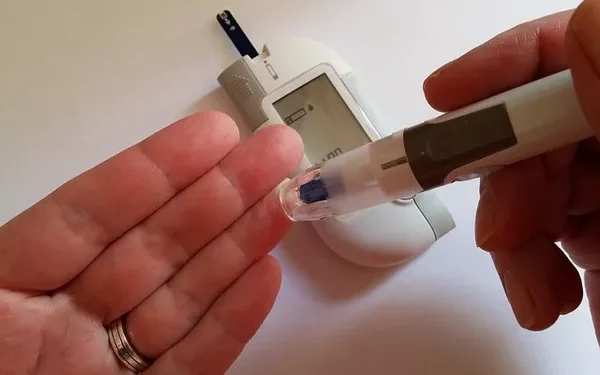Metabolic dysfunction-associated steatotic liver disease (MASLD), formerly known as nonalcoholic fatty liver disease, affects roughly 25% of the global population. The risk significantly escalates among those with type 2 diabetes, insulin resistance, and obesity, with prevalence rising to 75% in these groups.
As a diabetologist, I am acutely aware of the risk of liver disease every time I see a patient. Understanding and identifying this common yet often overlooked condition is crucial for effective treatment.
Understanding MASLD
MASLD is a complex disorder influenced by both genetic and environmental factors. Initially, the liver accumulates fat through a process known as steatosis. This fat typically comes from adipose tissue and fatty acids produced in response to insulin resistance and excessive caloric intake. The accumulation leads to liver enlargement and impaired function.
As the condition progresses, fatty acids activate enzymes that produce toxic byproducts, causing liver cell damage, inflammation, and scarring—referred to as metabolic dysfunction-associated steatohepatitis (MASH). The risk of progressing from MASLD to MASH is heightened by factors such as type 2 diabetes and metabolic syndrome.
Without intervention, MASLD and MASH can lead to severe liver scarring, liver failure, and even cancer. They also increase the risk of cardiovascular disease and liver-related complications. In the U.S., MASH is now the leading cause of liver transplants due to hepatic cancer among women and individuals over 65. It is poised to surpass hepatitis B and C as the predominant cause of liver cancer.
The Link Between Liver Disease and Type 2 Diabetes
Approximately 75% of individuals with type 2 diabetes have MASLD. This association is primarily due to insulin resistance, which is central to both liver disease and diabetes development. Obesity contributes to fat buildup around internal organs and increases fatty acids transported to the liver, exacerbating insulin resistance.
Normally, insulin suppresses glucose production in the liver when blood sugar levels are high. When the liver becomes resistant to insulin, it continues producing glucose despite high blood sugar levels, which can further develop into type 2 diabetes. A 2015 meta-analysis revealed that individuals with MASLD face nearly double the risk of developing type 2 diabetes compared to those without the condition.
MASLD disproportionately impacts certain ethnic groups. For instance, about 20% of Hispanic individuals in the U.S. are affected, likely due to genetic variations that impair fat processing in liver cells.
Treatment and Management of MASLD and MASH
Management of MASLD mirrors strategies for controlling obesity and type 2 diabetes. Weight loss through a healthy diet and regular exercise is crucial for reversing early stages of MASLD. A weight reduction of 5% to 10% can significantly improve liver health. Avoiding excessive alcohol consumption is also essential to prevent further liver damage.
Recent advancements in diabetes medications, such as GLP-1 receptor agonists (Ozempic, Mounjaro) and SGLT2 inhibitors (Jardiance, Invokana), have shown promise in managing early MASLD by promoting weight loss. Studies indicate that Ozempic and Mounjaro may even reverse MASH in some cases. Older diabetes medications, such as pioglitazone, can also help reduce MASH progression by alleviating insulin resistance.
For individuals with severe obesity or those who have not responded to lifestyle changes and weight loss medications, bariatric surgery offers an effective treatment for MASLD by achieving substantial and sustained weight loss. Additionally, the FDA recently approved resmetirom for treating advanced MASH with significant liver scarring.
However, a definitive cure for MASLD remains elusive, underscoring the importance of early diagnosis and proactive management to prevent irreversible liver damage.
Raising Awareness
Despite its prevalence, awareness of MASLD is low, with fewer than 5% of those affected aware of their condition. MASH can be challenging to diagnose, as it often presents with no symptoms or is mistaken for other conditions. Many people may have MASLD for years without realizing the gradual damage it causes, similar to type 2 diabetes or high cholesterol.
Increasingly, young people are being diagnosed with early-onset MASLD, with nearly 8% of children and adolescents affected, and over 34% of children with obesity. These individuals face a higher risk of developing type 2 diabetes and long-term cardiovascular disease and cancer.
The projected health care costs for managing type 2 diabetes and MASH over the next two decades are substantial, highlighting the need for early and aggressive treatment.
If you are among the millions with prediabetes or diabetes and are also overweight, you likely have some degree of MASLD or MASH. Early awareness and diagnosis are crucial. Consulting a liver specialist can help halt the progression of this challenging condition and leverage recent treatment advances.
Related topics:
Xanthones: A Promising Ally in Diabetes Management
Physical Activity Mitigates Sedentary Mortality Risks in Diabetes Patients
First Generic GLP-1 Medication Offers Affordable Option for Diabetes Management


























